With some blockbuster space missions under way, 2019 saw some amazing images beamed back to Earth from around the Solar System. Meanwhile, some of our most powerful telescopes were trained on the Universe's most fascinating targets. Here are a few of the best.
Up in the clouds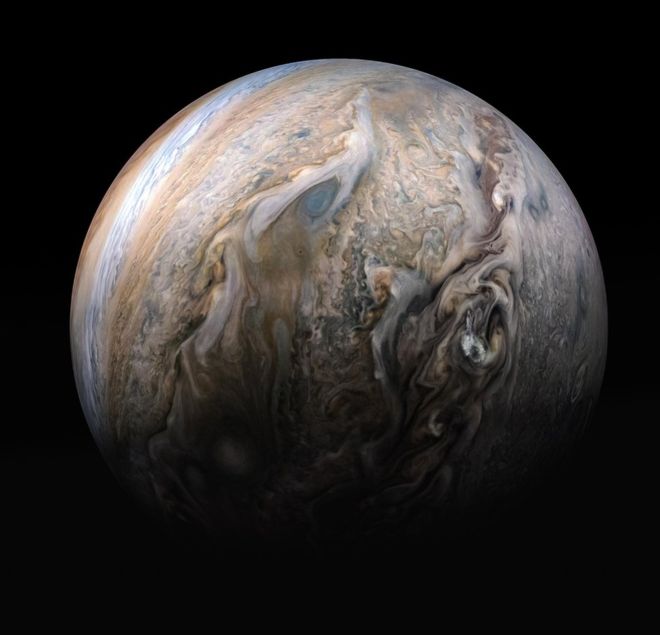
Nasa's Juno spacecraft has been sending back stunning images of Jupiter's clouds since it arrived in orbit around the giant planet in 2016. This amazing, colour-enhanced view shows patterns that look like they were created by paper marbling. The picture was compiled from four separate images taken by the spacecraft on 29 May.
At the time, Juno was making a close pass of the fifth world from the Sun, approaching to between 18,600km (11,600 miles) and 8,600km (5,400 miles) of the swirling cloud tops.
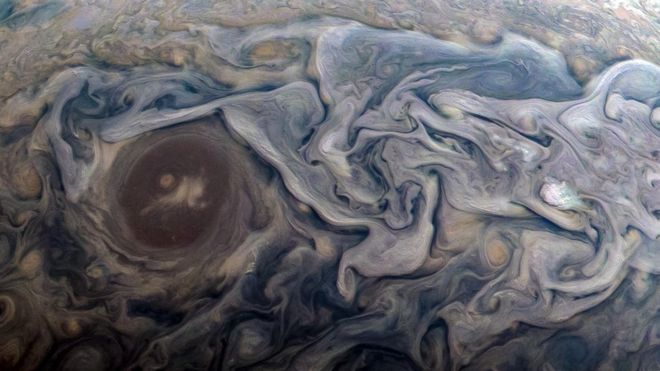
The image above shows swirling clouds that surround a circular feature within a jet stream region on Jupiter.
The snowman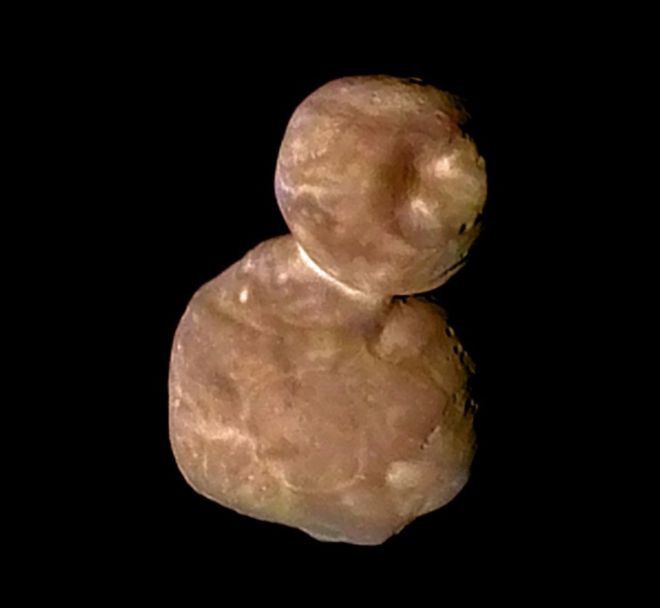
After its swing-by exploration of Pluto in 2015, Nasa's New Horizons spacecraft was sent after a different target in the distant Kuiper Belt, which lies beyond the orbit of Neptune. This belt is populated by thousands of primitive, icy objects that provide insights into the very beginnings of our Solar System.
Scientists settled on an object called MU 69, which had only been discovered in 2014. MU 69 (later called Ultima Thule, and now Arrokoth) turned out to be a 39km-long "contact binary", composed of two different icy balls that collided at low speed. The reddish colouration is caused by organic compounds called tholins on the surface.
Stellar fireworks
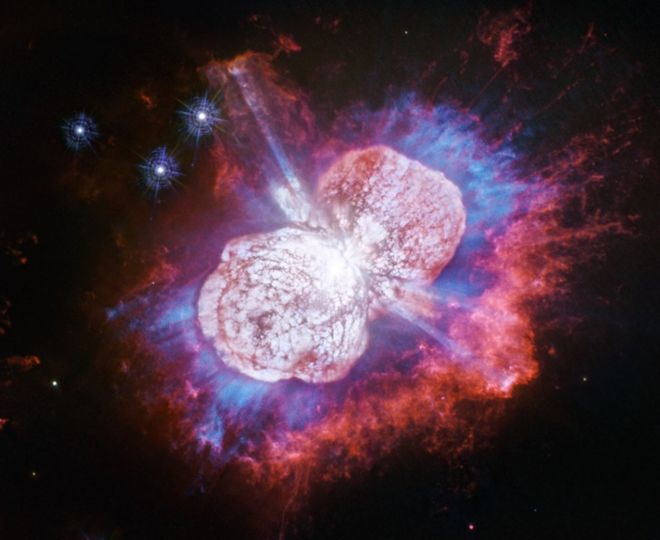
Eta Carinae is a star system located around 7,500 light-years away. It consists of at least two stars that, combined, emit about five million times more energy than our Sun. One of the stars has been releasing hot gas that has expanded into a pair of ballooning lobes. For decades, astronomers have wondered whether it is on the brink of destruction, and will erupt in a violent supernova. This latest image of the stellar fireworks display was released this year, and was taken by the Wide Field Camera 3 on the Hubble Space Telescope.
Martian selfie
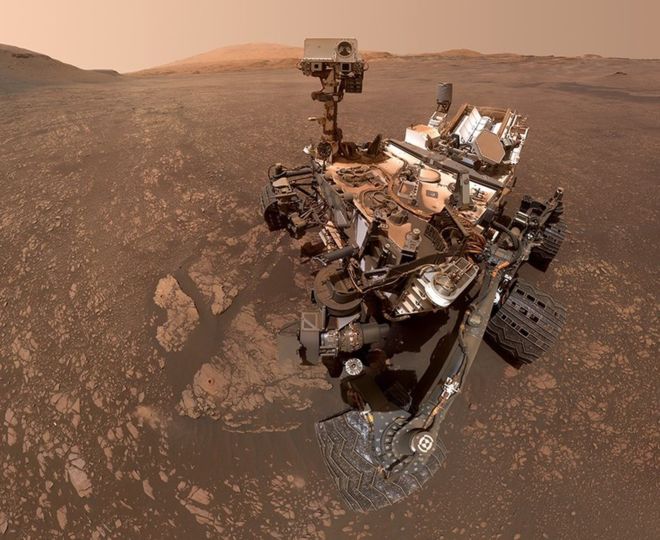
Nasa's Curiosity rover has been exploring Gale Crater on Mars since 2012. The robot took this "selfie" as it explored the slopes of Mount Sharp - a mountain that forms the central peak of the impact depression.
Two samples of rock drilled from this site showed exceptionally high amounts of clay minerals. Clay often forms in the presence of water, which is a key ingredient for life. Previous evidence had shown that water once pooled in Gale Crater.
Far side of the Moon
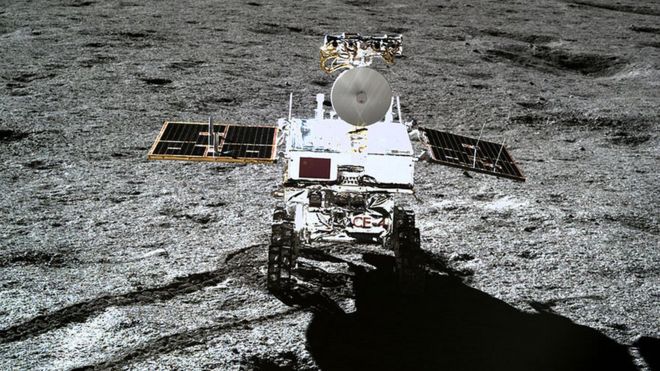
On 3 January this year, China's Chang'e-4 spacecraft became the first mission to perform a soft landing on the far side of the Moon. A few days after the touchdown, cameras on the robotic rover and its lander were commanded to take photos of one another.
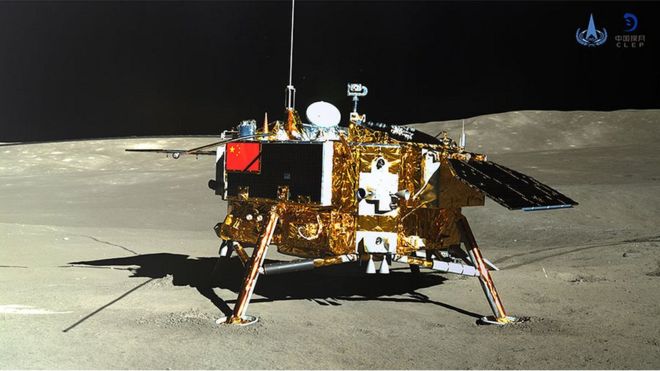
The spacecraft were carrying cameras, a radar to probe beneath the lunar surface, a spectrometer for identifying minerals and a live experiment to grow plants in a mini-biosphere. In May, Chinese scientists reported that Chang'e-4 had confirmed a longstanding idea about the origin of a vast crater on the Moon's far side where the mission landed.

